I have a weird love-hate relationship with Uni.
I feel like it’s a very “foodie” ingredient and I’m supposed to be obsessed with it and order it whenever it’s on a menu.
But the truth of the matter is, I don’t love it.
Most of the time, it tastes to me like I’m taking a big bite of the ocean, and if you’ve ever been crushed by a wave and taken in a mouthful of seawater, it’s not always the most pleasant experience.
That said, there are some instances where I can enjoy and appreciate the unique flavor and “umami” it brings to a dish. For example, one of my last nights in Greece a couple years ago, we ate at a nice Italian restaurant in Mykonos for my friend Josh’s birthday. They had an uni pasta dish so I decided to try it. And lo and behold… I liked it! That said, it was still very rich and I couldn’t finish the whole serving (especially after wine and appetizers), but I liked it enough to try my own version here on the blog.
If you’ve never had uni before, you may be wondering what exactly it is. Uni is the Japanese word for Sea Urchin. It’s the only edible part of the urchin, which is black and spiny, with this orange fleshy stuff inside of it. Often, people mistakenly refer to the uni as the roe or eggs… but it’s technically the gonads… which produces the roe. Grossed out yet? Yeah, me too, don’t worry. Making it even more unappetizing is the appearance and texture. They sort of look like little mini beef tongues. Mmmm…. fishy beef tongues. Sign me up!
But unlike a beef tongue, uni is actually very creamy and custardy (is that a word?) At sushi restaurants, it’s often served raw, and I’ve also had it atop toast at a nice restaurant. But for this dish, I’m using the creamy consistency to my advantage to create a delicious pasta sauce that is slightly cooked when mixed into the hot pasta.
As for where to find it, your best bet is a high quality Japanese market. Lucky for me, one recently opened in the town where I live, so I was able to get some fresh uni there. It wasn’t clearly marked how much this was weight-wise, but based on other recipes I’ve seen, I think it was about 3-4 ounces or 120 grams. It usually will come in a little wooden box. It should look somewhat firm, and not slimy or mushy at all (you should be able to make out the individual pieces.) This box ran me about $23.
As for the rest of the ingredients, this is just a basic carbonara recipe, with eggs, butter and pancetta (Italian bacon essentially). For the pasta, you can easily use a spaghetti or a linguine, but I opted for a bucatini, which is slightly thicker and hollow. It may also be marked as perciatelli (same thing) so if you want to try this type of pasta, be on the lookout for both.
I bought a 4 ounce package of already diced pancetta to help cut down on the prep time. Start sautéing it over medium heat until the fat renders and the meat is cooked on the borderline of becoming crispy. (Mmmmm… bacon.)
Meanwhile, you can start the uni sauce. If you’d like to garnish with a few pieces, I would reserve the best 4 or so pieces of uni, and then add the rest to a food processor or blender, along with 2 tablespoons of olive oil and a pinch of red pepper flakes. Process until you get a smooth, creamy sauce. (Only takes 20 seconds or so).
This seems like a good time to point out the amazing photography work of my awesome and talented boyfriend, Justin. Always makes a recipe post more enjoyable (and smoother) when I don’t have to stop down to take my own photos. (Not to mention the beautiful artistic quality!)
Some of the recipes for uni pasta I found online recommended passing the uni through a fine mesh sieve. But to be honest, I found that step cumbersome, unnecessary, and slightly revolting. Soooo…. I’m gonna say that as long as you blend it up properly, you will get the consistency you need. To the uni concoction, I added 2 whole eggs plus an additional egg yolk (all at room temperature) to make this a true carbonara (egg in the sauce.) Set aside.
This is a cool shot of the pasta so you can see that it’s actually hollow. The name bucatini comes from the Italian word “buco” which means “hole.” Or the Neopolitan version perciatelli coming from “perciato” which means “pierced.” Regardless, it’s fun and you should check it out if you can find some. Boil until al dente in slightly salted water, and make sure to reserve about a half cup of the cooking liquid for the sauce.
Once you’ve reserved some of the cooking water, you can drain the cooked pasta in a colander. (Don’t rinse!)
Return the hot noodles to the hot pan, and slowly incorporate the uni/egg mixture into the noodles, gently tossing the noodles as you pour. Add two tablespoons of room temperature butter a little at a time until the butter has melted. Next, add some of the pasta water in the same manner, until you have a nice “saucey” consistency (you may or may not need all of the pasta water.) Add the cooked pancetta, along with any of the rendered fat and toss well to combine.
From here, you can plate your pasta. This should make either 2 large dinner servings, or 4 smaller, appetizer servings.
Sprinkle with red pepper flakes, if desired, and garnish with a piece or two of raw uni (again, if desired.) Personally, the raw uni kind of grossed me out (especially after working with it), so I wouldn’t want any of it on my plate… but I’m not gonna tell you how to live your uni pasta life.
Carbonara traditionally uses grated Parmesan in the sauce, but since I subbed the uni for the cheese, it didn’t really need it. Also, there’s some differing views on the use of cheese on seafood dishes, but I think in this instance it’s ok, so feel free to top with a little Parmesan, or don’t. Whatever your little heart desires.
I’ll be completely honest with you, Justin and I didn’t think we were going to like it… BUT… I am happy to report that it was DELICIOUS. The uni flavor was very subtle, you kind of got it on the back end of each bite. (Helps when bacon and butter are also involved.) But seriously, it was a delightfully rich and luxurious carbonara and I would absolutely recommend it, even if you haven’t traditionally liked uni in the past. Thanks again to Justin for the awesome photos and for pushing me to try something out of my comfort zone. Bon Appétit!

document.write(”);
- 3-4 ounces (or 120 grams) fresh uni/sea urchin, room temperature
- 4 ounce package diced pancetta
- 2 tablespoons olive oil
- 2 eggs + 1 egg yolk, room temperature
- 1 pinch red pepper flakes, plus more for garnish
- 8-10 ounces dry bucatini or perciatelli pasta
- 2 tablespoons butter, room temperature
- 1/2 cup reserved pasta water
- Parmesan cheese, for garnish (optional)
- Unwrap uni and discard any pieces that do not look firm and fresh. Reserve the 4 best pieces for garnish (if desired).
- Sauté pancetta over medium heat until the fat renders and the meat is cooked on the borderline of becoming crispy. Remove from heat.
- While pancetta cooks, start the sauce. Add the uni to a food processor or blender, along with 2 tablespoons of olive oil and a pinch of red pepper flakes. Process until you get a smooth, creamy sauce. (Only takes 20 seconds or so).
- In a medium bowl, whisk together the room temperature eggs and egg yolk. Slowly pour uni mixture into the eggs, whisking constantly until the two are fully incorporated. Set aside.
- In a large pot of slightly salted water, boil pasta according to package directions until al dente. Turn off heat. Reserve half a cup of pasta water and drain noodles. Return the hot noodles to the hot pan.
- Slowly incorporate the uni/egg mixture into the noodles, gently tossing the noodles as you pour. Add two tablespoons of room temperature butter a little at a time until the butter has melted. Next, add some of the pasta water in the same manner, until you have a nice “saucey” consistency (you may or may not need all of the pasta water.) Add the cooked pancetta, along with any of the rendered fat and toss well to combine.
- Plate pasta and sprinkle with red pepper flakes, if desired, and garnish with a piece or two of raw uni (again, if desired). Serve with freshly grated Parmesan cheese (again, optional.)

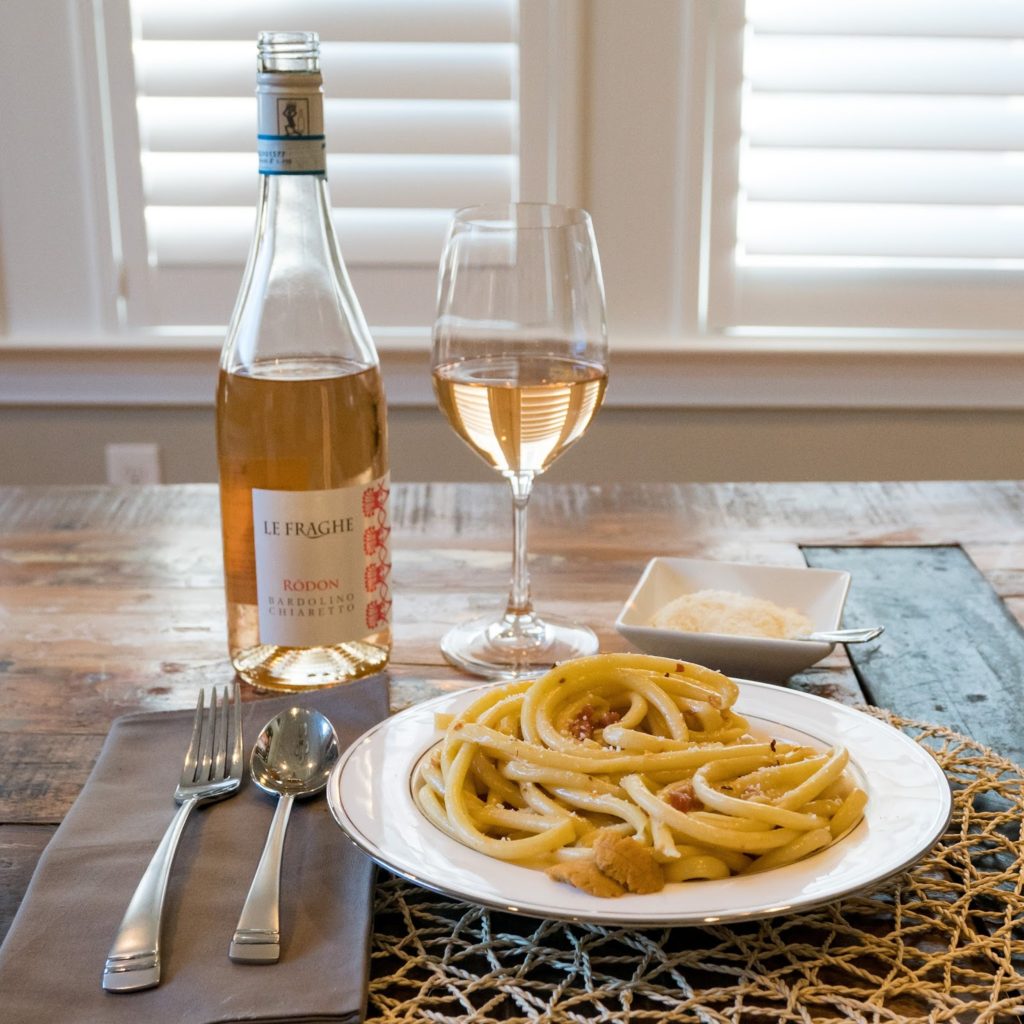





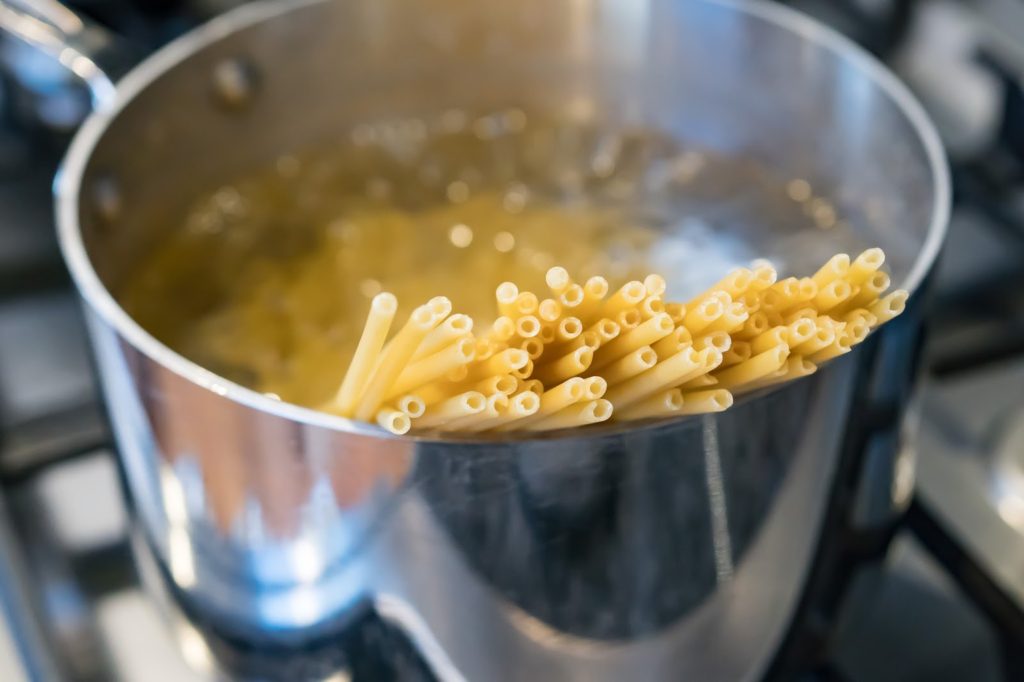
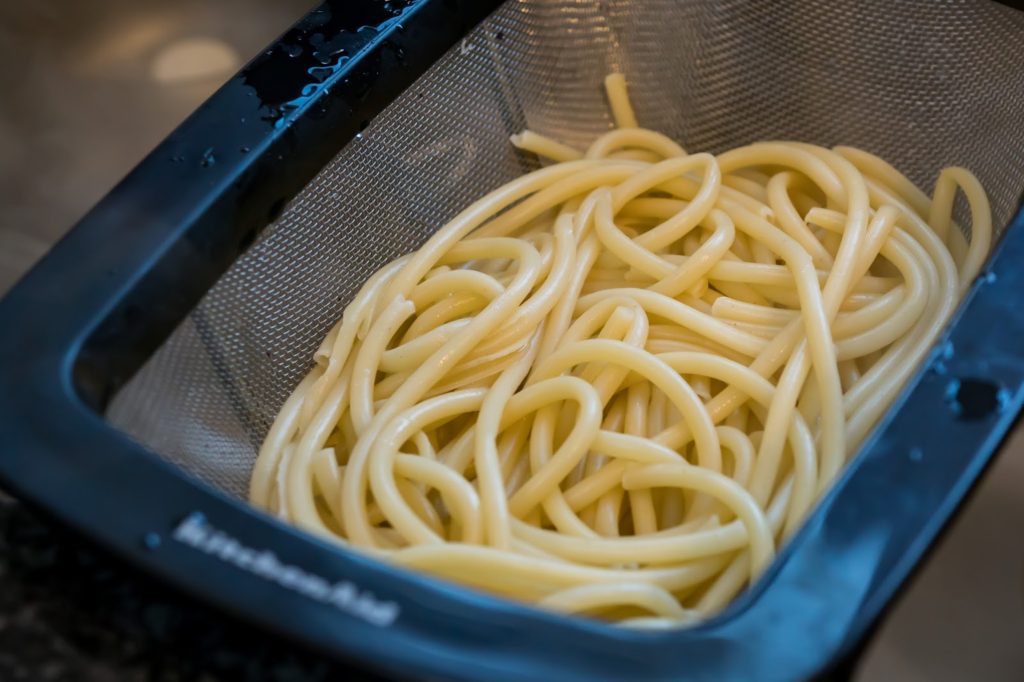
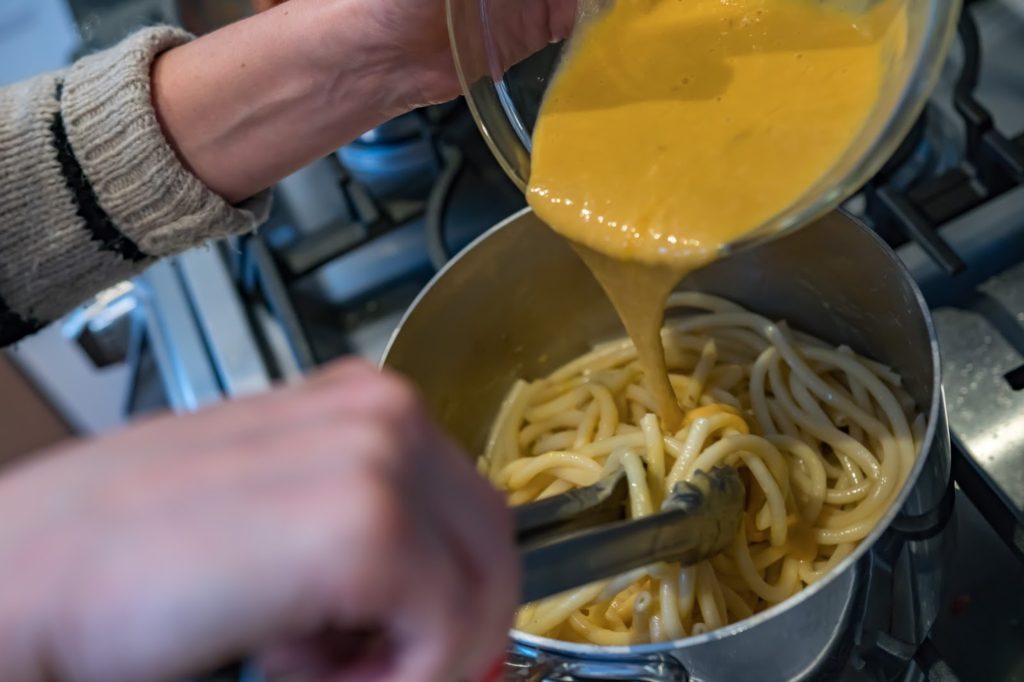



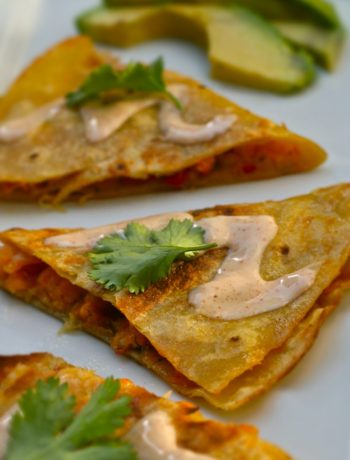
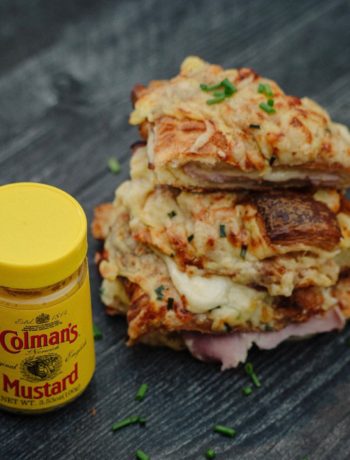
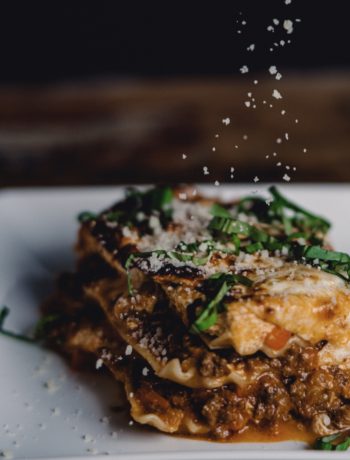
Wait till you see your breakthrough
May 10, 2017 at 5:48 amI assisted my 10 year old to make this for the family. A big success! Not a scrap remained 🙂
jaymeesire
November 14, 2017 at 6:50 pmWow… you have a talented kid there!! Glad you all enjoyed it! I was a little grossed out while making it but it turned out SO good!